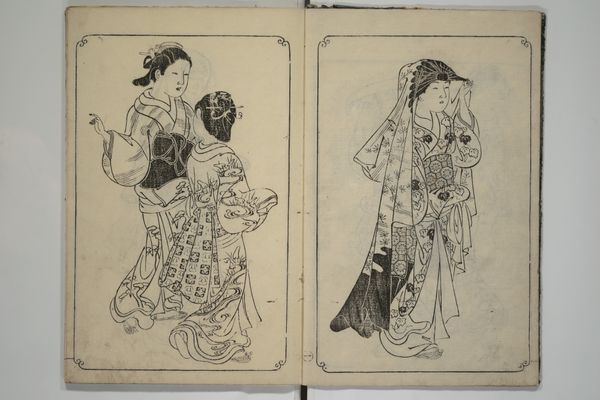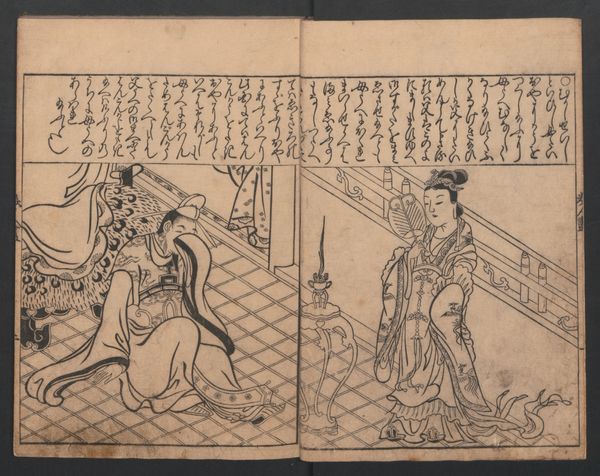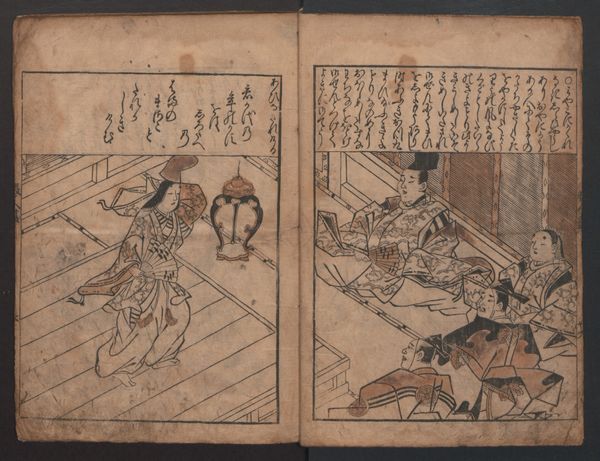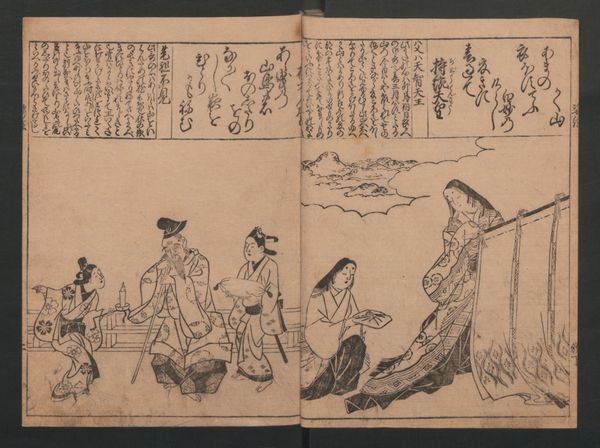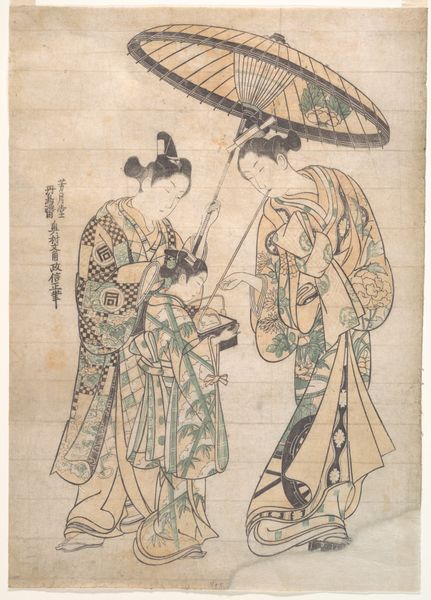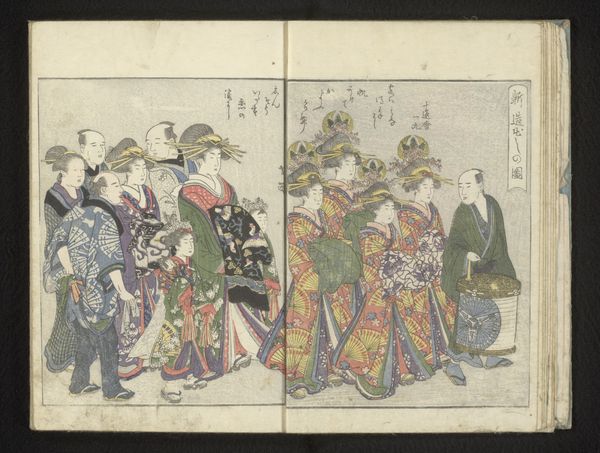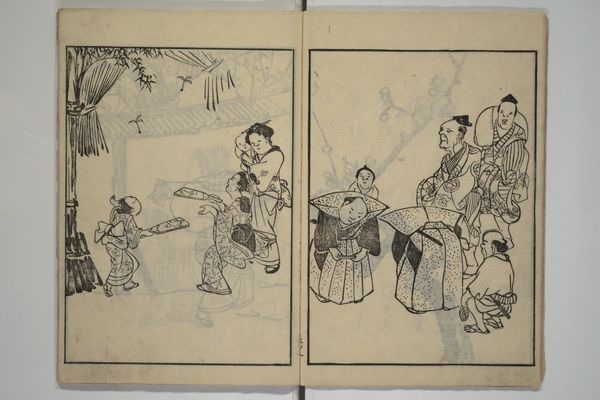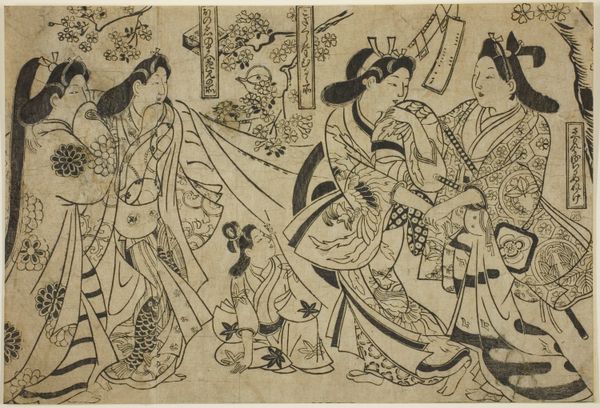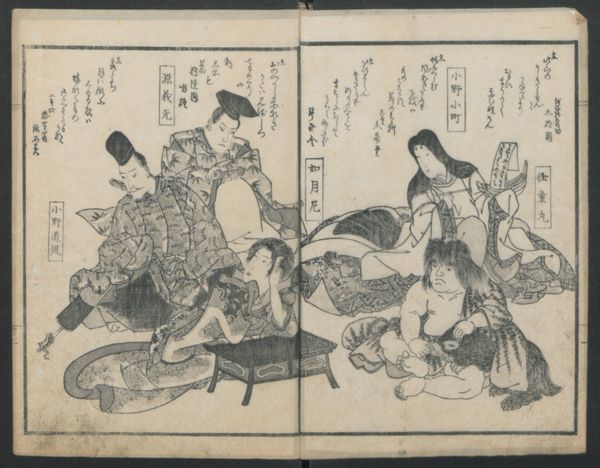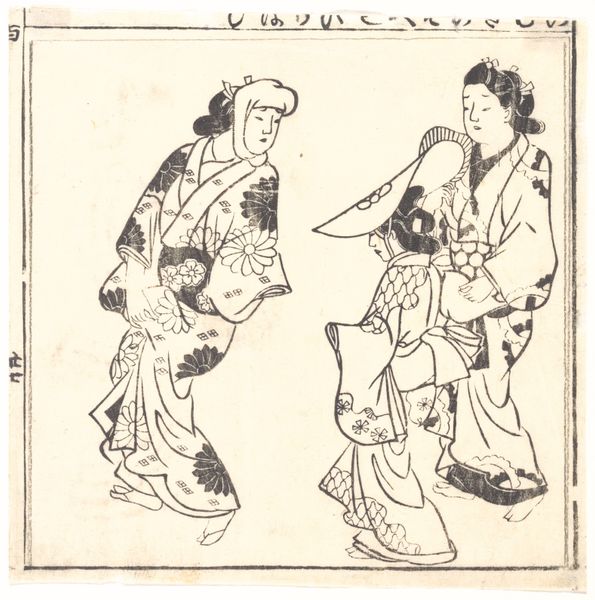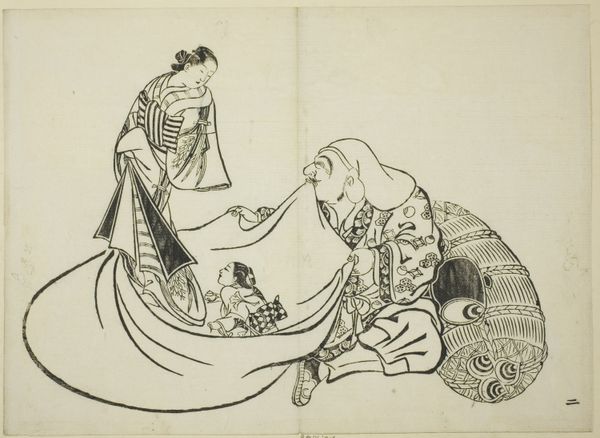
Picture Book: Mount Asaka (Ehon Asakayama) 1739
0:00
0:00
drawing, print, paper, ink
#
portrait
#
drawing
# print
#
book
#
asian-art
#
sketch book
#
ukiyo-e
#
paper
#
personal sketchbook
#
ink
#
coloured pencil
#
pen-ink sketch
#
genre-painting
#
calligraphy
Dimensions: Overall: 10 3/8 × 7 in. (26.4 × 17.8 cm)
Copyright: Public Domain
Curator: Upon examining these pages, one is immediately struck by the artist's exquisite command of line and form, the negative space used as deftly as the positive, isn’t it? Editor: Yes, it evokes a profound sense of intimacy, a glimpse into the feminine realm. But it's not simply a surface representation. One feels that the garments they wear represent codes, emblems of identity and social standing. The positioning of these women tells stories about them, perhaps archetypes from literature. Curator: Indeed! What we have here are pages from Nishikawa Sukenobu’s "Picture Book: Mount Asaka (Ehon Asakayama)", created around 1739. This beautifully rendered book, rendered with ink and subtle color on paper, belongs to the Ukiyo-e tradition and provides valuable insight into the era. Editor: It’s striking how the compositions—two figures on the left page and one on the right—create a subtle visual imbalance. Does it suggest the importance of community versus individuality, or even a before and after? Perhaps this has social significance that these pages capture. Curator: Likely so. These images reflect both individual character and deeply ingrained social customs. Observe how the clothing patterns bear different iconographic weights – flowers, geometric shapes, all imbued with symbolic meaning that transcends mere aesthetics. The delicate balance in their stances subtly communicate narratives and social position, even to our modern eye. Editor: The choice to depict women – archetypically caregivers in traditional culture - may well express ideals of the home. Through repeated representation in ukiyo-e art these women become encoded emblems of beauty, sophistication, and aspiration. They offer not only the external semblance of a cultural type but insight into an emotional sphere, as well. Curator: That's a marvelous insight. To contemplate this book is to immerse ourselves in both aesthetics and history, viewing not just individuals, but a symbolic portrait of Edo period culture. Editor: Yes. It’s quite moving to witness how visual syntax builds stories layer upon layer—revealing both the mundane and the profound. This is really art that can speak volumes.
Comments
No comments
Be the first to comment and join the conversation on the ultimate creative platform.
